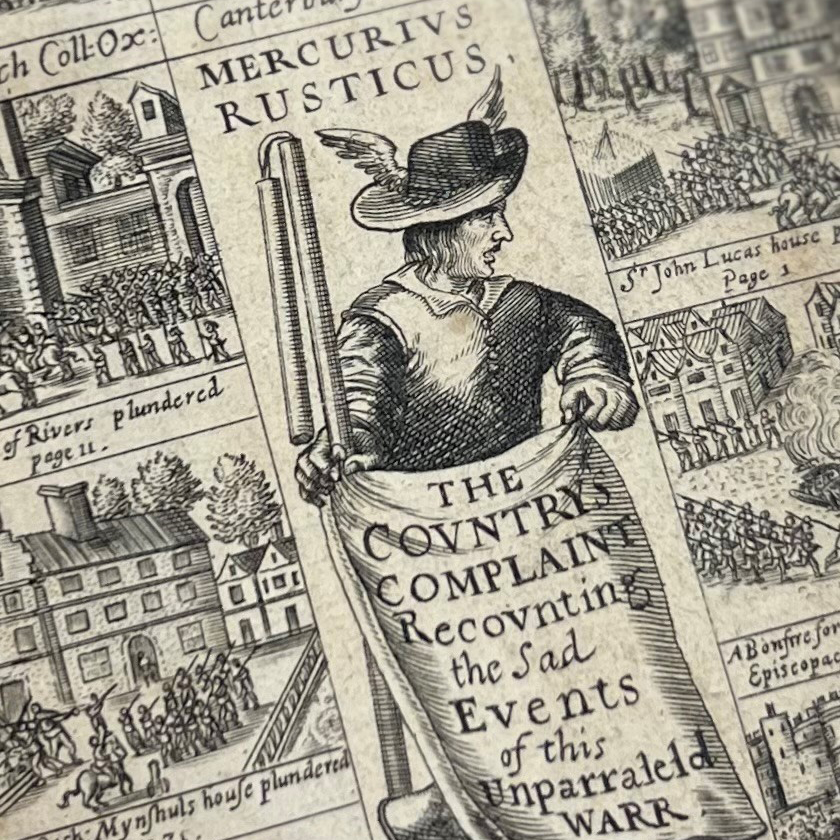 Guest piece by Elizabeth Smith
Guest piece by Elizabeth Smith
Was Exeter Cathedral severely vandalised during the English Civil War in the 1640s? Many books and commentaries claim that it was, based on folklore surrounding Oliver Cromwell but also on the writings of Mercurius Rusticus. In 1643 a series of ‘newsbooks’, forerunners of newspapers, were published by Bruno Ryves (1596-1677) under the pseudonym of Mercurius Rusticus. Ryves was a Royalist clergyman at the court of King Charles I in Oxford, and an unashamed propagandist for the King’s cause.
Ryves’s newsbook on Exeter Cathedral starts with an account of the Cathedral’s history which bears only a passing resemblance to the truth. (For example: King Athelstan founded a monastery on the site and named it after St Peter; William Warelwast built the current Quire but intended it to be the Nave.) It is reasonable to assume that Ryves may have been similarly careless when describing contemporary events. He alleged that hundreds of organpipes were ripped out and paraded around the city, and that most of the windows were smashed. This is unlikely to be true but some specific claims are valid: the altar paintings of Moses and Aaron were indeed defaced, as was an image of Eve on the pulpitum.
Ryves’s 1643 pamphlet accused parliamentary troops of many other ‘sacrileges’, too numerous to mention here. Troops were often billeted in Exeter, and the city was home to zealous puritan civilians, so some of them probably did dishonour the Cathedral. However, it was not until 1646 that Sir Thomas Fairfax, Oliver Cromwell and the New Model Army entered Exeter: clearly they were not responsible for any of it.
Mercurius Rusticus’s wartime propaganda was popular amongst royalists, and his tracts were reprinted in book form in 1646, 1647 and 1685. Ryves himself suffered many deprivations as a result of his loyalty to the Crown but after the restoration of Charles II in 1660 he was made Dean of Chichester and then of Windsor. He was buried in St George’s Chapel Windsor, where Queen Elizabeth II was recently laid to rest.